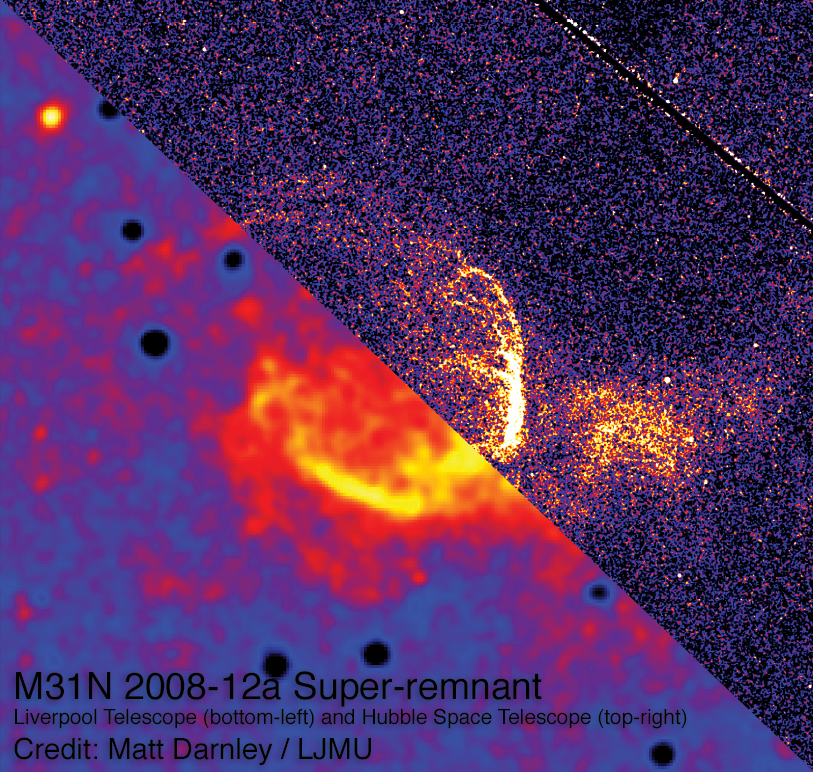Giant Bubble in Space
An international team of astrophysicists have uncovered an enormous bubble currently being ‘inflated’ by the regular eruptions from a binary star system within the Andromeda Galaxy.

The nova is in the middle of the image.
Credit: Matt Darnley / LJMU
Recent observations with the Liverpool Telescope and Hubble Space Telescope, supported by spectroscopy from the Gran Telescopio Canarias, and the Hobby Eberly Telescope (some of the largest astronomy facilities on Earth) discovered this enormous shell-like nebula surrounding ‘M31N 2008-12a’, a recurrent novae located in our neighbouring Andromeda Galaxy. At almost 400 lightyears across – and still growing - this shell is far bigger than a typical nova remnant (usually around a lightyear in size) and even larger than most supernova remnants.
Novae are created when you have a pair of stars where one is a white dwarf and the other is close enough for gas to fall from it's outer regions onto the white dwarf. When the gas builds up enough on the white dwarf it can cause a huge thermo-nuclear explosion like a giant hydrogen bomb, which blasts even more gas out into space in a nova eruption. Then the process re-starts, with the gas slowly building up until it again reaches a critical level..
For most novae, there is a long time - maybe thousands of years - between eruptions, but for recurrent novae, the gas builds up fast enough for the eruptions to occur much more frequently. This nova is very rare in that it has eruptions almost every year.
As Matt Darnley from the Astrophysics Research Institute here at LJMU here in Liverpool explains "Each year ‘12a’ (as we lovingly refer to it) undergoes a thermonuclear eruption on the surface of its white dwarf. These are essentially hydrogen bombs, which eject material equivalent to about the mass of the Moon in all directions at a few thousand kilometres per second. These ejecta act like a snow plough, piling the surrounding ‘interstellar medium’ up to form the shell we observe – the outer ‘skin’ of the bubble, or the ‘super-remnant’ as we have named it.”
These new observations coupled with state-of-the-art computer simulations (carried out at LJMU and the University of Manchester) have revealed that this vast shell is in fact the remains of not just one nova eruption but possibly millions – all from the same system.
As well as its uniqueness and huge scale, the discovery of this super-remnant may turn out to be even more exciting.
Dr Darnley continued: “Studying 12a and its super-remnant could help us to understand how some white dwarfs grow to their critical upper mass and how they actually explode once they gets there as a ‘Type Ia Supernova’. Type Ia supernovae are critical tools used to work out how the universe expands and grows.” In a related work, also led by Matt Darnley, this team has predicted that 12a will ultimately explode as a Type Ia Supernova in less than 20,000 years – a very short time in cosmological terms.
So, as well as being busy taking your observations, the Liverpool Telescope is also keeping up its main job of helping us to discover more and more about the Universe.

